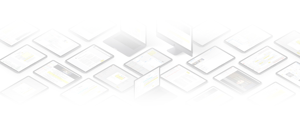
Ian Unsworth, King’s Counsel, has been at the Bar for 25 years, and has been a Silk for 7. His practice is mostly prosecution work for the Crown, but also includes defense work. In his many years at the Bar, Mr. Unsworth has handled some of the most complex trials in England, from murder to bank robbery. The trials usually involve enormous volumes of evidentiary data, including documents and photos, as well as CCTV footage. Of late, he’s depended on TrialPad to present it all.
Mr. Unsworth spoke with us a few weeks ago to discuss his recent experiences with TrialPad, and started with some interesting background information. Several years ago, the Crown Courts of England and Wales began a Criminal Justice Service Efficiency Programme, which is an effort to add technology at every step of the legal process in the hope of also adding significant efficiency. Part of the program is called the Crown In Court Presentation Project, which worked to make every courtroom in the Crown Courts System a place where evidence could be presented electronically from a laptop or tablet. As a result, every courtroom has a dedicated WiFi network to which barristers are given access, as well as a system which wirelessly connects barristers’ devices to screens throughout the courtroom to display digital evidence including CCTV footage, digital images, audio recordings, and documents.
Lawyers in the Crown Courts System are encouraged to work from their laptops or tablets, and many have chosen iPads as they are light, portable, and reliable. Outside the courtroom all documents in the Crown Court Digital Case System, the official evidence database, are electronic and available to view or download by barristers involved in the matter, virtually eliminating paper throughout the legal process. This has increased efficiency within the Courts, and also pushed barristers toward using laptops or tablets as a regular part of their practices. Inside the courtroom, barristers typically use the built-in wireless presentation system to share their computer screens, but zooming in or highlighting documents is limited to the abilities of the PDF program they are running, and callouts or comparing two documents side by side is not possible. Enter Mr. Unsworth and TrialPad.
Mr. Unsworth’s first use of TrialPad was for a large and complex criminal trial. The case involved six defendants and a lot of evidence, including many documents and photos, secret recordings and their associated transcripts, and closed circuit footage of the defendants blowing up banks (yes, literally). During what would be a four month trial, Mr Unsworth relied on TrialPad to display all of that evidence through the Court’s wireless system. He described TrialPad’s performance during that time as flawless. The ability to not only display documents, but to quickly call them up, then highlight and callout portions where focus or emphasis was needed made his presentation much faster and more effective, resulting in Mr. Unsworth’s opposing KC downloading TrialPad a few days into the trial. Later, the presiding Judge even remarked that every trial ought to operate the way Mr. Unsworth conducted his presentation of evidence. There have been several trials since then, and Mr. Unsworth has brought TrialPad to every one.
While part of his presentation success is found in his significant experience at the Bar, part is also now due to TrialPad working seamlessly with technology that is built into every courtroom in England and Wales. Because the same exact setup is found in every courtroom, the technology portion of legal presentation is simplified and streamlined to great effect. Mr. Unsworth can be confident that the only equipment he needs to present in any courtroom throughout the entire system is his iPad and TrialPad. He merely has to turn up and plug in. One cannot present more efficiently than that.
A side note for US Lawyers: In England and Wales the Crown Courts System expects lawyers to use technology for the efficiency it brings, and supports them by providing it in a uniform and consistent way. As a result, a barrister can walk into any court in England or Wales, confident in what equipment he or she will find there, and with the knowledge, ability, and expectation that they will use it to the benefit of their client or the Crown.


